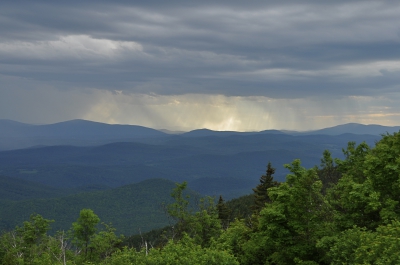By Lynn Barrett, Vermont Arts & Living Editor
Our small towns stand by a wonderful sense of community and trust. We depend on our neighbors. We come through for each other. Just think about how neighbors responded during Tropical Storm Irene; no one stopped to think about the other’s politics or whether they were a second homeowner or a permanent resident. Everyone pitched in to get the job done.
 But Vermont’s small towns are threatened by a frenzy of development activity from huge energy generation projects in the name of the environment.
But Vermont’s small towns are threatened by a frenzy of development activity from huge energy generation projects in the name of the environment.
One of Vermont’s largest landowners, a company that owns Stiles Brook Forest, which spans the boundary between the historic towns of Grafton and Windham, has invited one of the world’s largest foreign energy companies to build an industrial wind project there. If developed, this would become the largest industrial wind project in Vermont with more than 700 homes within three miles of the skyscraper-sized turbines—sited nearer by far to more homes than any other wind project in the state.
We’ve done our research: Wind energy is not effective in Vermont. Wind energy projects destroy natural resources. Many environmentalists have raised concerns about destruction of otherwise undisturbed areas and the deaths of birds and bats.
Furthermore, wind energy is not cost effective; it has negative economic impacts on tourism and property sales. Surrounding towns are burdened but see no benefits. Such projects provide few, if any, permanent jobs for Vermonters. They pit neighbor against neighbor and the permitting process is undemocratic. The trail of Vermonters suffering from negative health effects, and even abandonment of their homes, is a disgrace to the system.
Vermont’s carbon footprint of electricity consumption is puny. The top three sources of greenhouse gas emissions in the state are transportation, heating, and agriculture.
So why are we destroying the very mountaintops and beauty that Vermont is known for worldwide?
Well, maybe it’s because large-scale electricity generation and transmission projects bring in more big money for utilities, developers, and equipment manufacturers than there is in working on our heating or transportation footprints.
Elected officials and the state’s biggest “environmental” groups have helped whip the public into accepting that destroying our mountains by building turbines on them will reverse climate change and prevent another Tropical Storm Irene.
But we’re not fooled. Although industrial wind is proclaimed renewable—yes, it does draw power from the wind—it’s a fallacy to think the process is affordable or clean in Vermont.
Think about all of the materials, including rare earth elements—plus manpower, machines, and transportation—that it takes to harness wind. And once wind turbines are up and running they don’t run all the time. The process is intermittent, and there is no way to store the power when a turbine is running but not needed. Wind power requires backup, and that backup is fossil fuels. Turbines only run at 25 percent to 40 percent efficiency compared to other energy sources that run at about 80 percent.
Why would we destroy the very essence of our villages and our ridge lines for energy that, in the long term, really doesn’t work in Vermont?
Think about the lasting effects destroying our ridge lines will have on our lives, our land, our towns, our mountains, our wildlife, our visitors, our children, our health, our well being, and our future and for what?
Let’s work together so that we make less of a footprint while respecting Vermont’s own unique environment and character. Many experts say that the most effective and suitable measures toward this goal are efficiency, conservation, and locally based energy projects that do no harm to the environment. There are a number of energy-saving measures individuals and businesses could embrace, such as installing heat pumps and rooftop solar panels. These are very “Vermontish” alternatives to huge industrial initiatives. Let’s help shape state policies with energy solutions that protect the environment that sustains us.





















































